Navratri, a vibrant Hindu festival, celebrates the nine forms of Goddess Durga, each representing different aspects of life and divinity. Worshiped over nine days, these nine avatars reflect the victory of good over evil, embodying virtues such as courage, compassion, and inner strength. Here are the nine forms of Goddess Durga and their significance:
Navratri 2024: Who Are The Nine Avatars Of Goddess Durga And Their Significance?
Find the importance of the nine avatars of Goddess Durga. Join us in honoring Navratri and learn how each incarnation represents the victory of good over evil.
1. Maa Shailputri – The Goddess of Stability
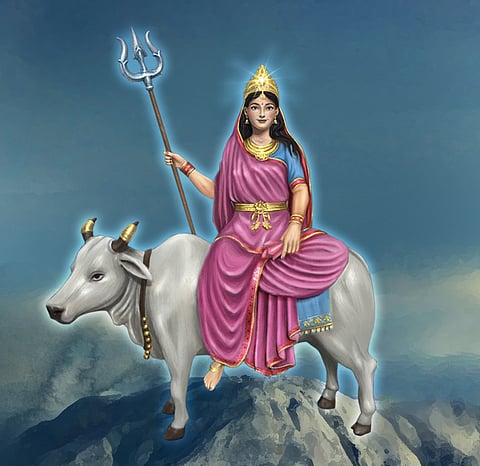
The first avatar of Goddess Durga is Maa Shailputri and this avatar of Maa Durga is worshiped on the first day of Navaratri celebration. She is the daughter of mountains which brings out aspects of strength, peace and purity of the woman. Her name is also ‘Shailputri’ and means that she is the daughter of the mountains; she rides a bull; she holds a trident; and she holds a Lotus. Maa Shailputri symbolizes patience and her followers pray for maintaining calmness and stability in their spiritual as well as material life.
2. Maa Brahmacharini – The Goddess of Penance and Knowledge

On the second day of Navratri, devotees pray to Maa Brahmacharini who actually means the path of devotion and celibacy. Moreover, she is an epitome of an ascetic and an individual who meditates deeply. Her form is illustrated with a rosary in her right hand, while the other hand holds a water utensil. Maa Brahmacharini also depicts the determination, focus, and wisdom of the followers. Her blessings assist the devotees to keep their eyes on the spiritual and individual objectives.
3. Maa Chandraghanta – The Goddess of Courage

The third day of Navratri is dedicated to Maa Chandraghanta, who is the goddess of power and the destroyer of evil spirits. She has a crescent moon on her forehead and that’s why she is named as Chandraghanta. Sitting on a tiger, she symbolizes the ability to take an action against the oppressors and all the vile creatures of the world. Chandraghanta is considered to be the deity which favors bravery and knowledge and she removes all the hurdles of the worshippers.
4. Maa Kushmanda – The Cosmic Creator
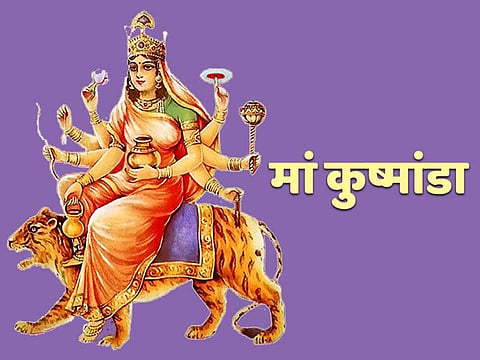
On the fourth day, devotees worship Maa Kushmanda, also known as the cosmic creator. She is believed to be the source of cosmic energy and creation. Maa Kushmanda radiates warmth and energy, nurturing life and maintaining the balance of power in the universe. She is said to be the Adi-Shakti, and her teachings help her followers channel their energies positively and maintain equilibrium in life. Worshiping her brings vitality and health to her devotees.
5. Maa Skandamata – The Mother of Lord Kartikeya
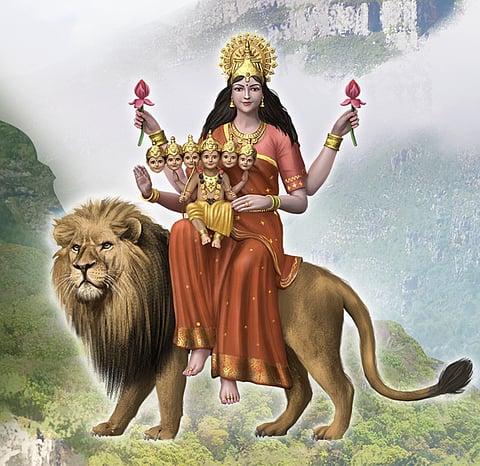
Maa Skandamata is worshiped on the fifth day of Navratri. She is the mother of Lord Kartikeya (Skanda), the god of war. As a symbol of maternal love and care, Skandamata represents the nurturing and protective side of motherhood. She teaches her devotees about unconditional love and the sacrifices that come with it. Her blessings provide her followers with the strength to face challenges with a calm and caring heart.
6. Maa Katyayani – The Warrior Goddess
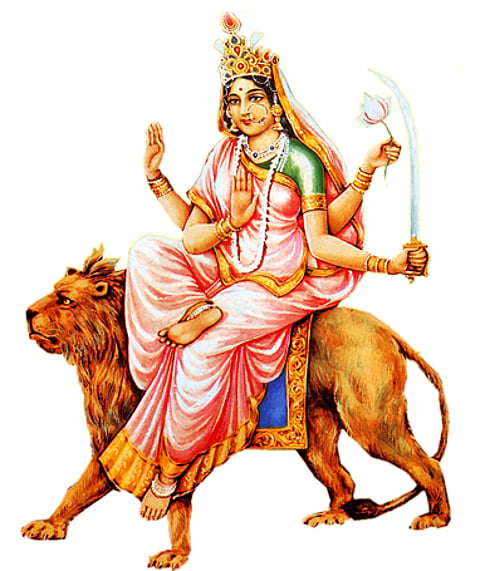
Maa Katyayani, the warrior goddess, is revered on the sixth day of Navratri. She represents strength, courage, and the ability to confront evil. Born as the daughter of sage Katyayan, she is often depicted with a sword in hand, ready to fight against wrongdoings. Worshippers of Maa Katyayani seek her blessings for inner strength and protection. She inspires them to stand up for righteousness and face life's challenges without fear.
7. Maa Kaalratri – The Goddess Who Destroys Darkness
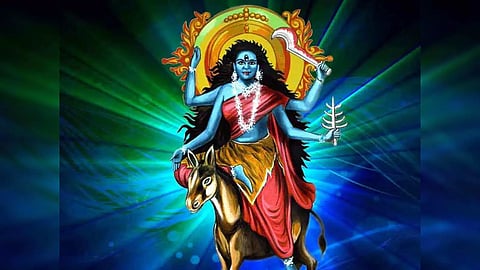
On the seventh day, devotees worship Maa Kaalratri, the fiercest form of Goddess Durga. She is often depicted in a dark complexion with disheveled hair, symbolizing her fearsome nature. Maa Kaalratri represents the destruction of ignorance, evil, and darkness. She teaches her followers to be fearless and determined in their fight against negativity. Devotees pray to her for protection from harm, both physical and spiritual.
8. Maa Mahagauri – The Goddess of Purity and Serenity

The eighth day of Navratri is dedicated to Maa Mahagauri, who symbolizes purity, peace, and wisdom. She is often depicted in a white robe, riding a bull, and is believed to bestow purity upon her devotees. Maa Mahagauri represents transformation, as her fair complexion emerged after she performed severe penance to purify herself. Devotees seek her blessings to purify their minds and souls, bringing serenity and calmness into their lives.
9. Maa Siddhidatri – The Goddess of Supernatural Powers
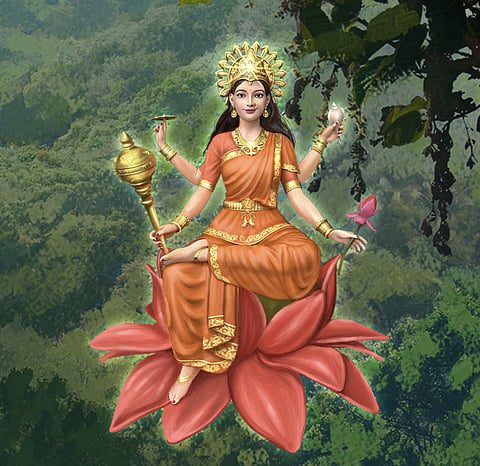
The final form of Goddess Durga is Maa Siddhidatri, worshiped on the ninth day of Navratri. She is known as the goddess who grants supernatural powers or "siddhis" to her devotees. With her divine energy, she brings harmony and balance to the universe. Devotees who worship Maa Siddhidatri seek wisdom, spiritual enlightenment, and the power to achieve their highest potential. Her blessings help them transcend the material world and attain spiritual fulfillment.